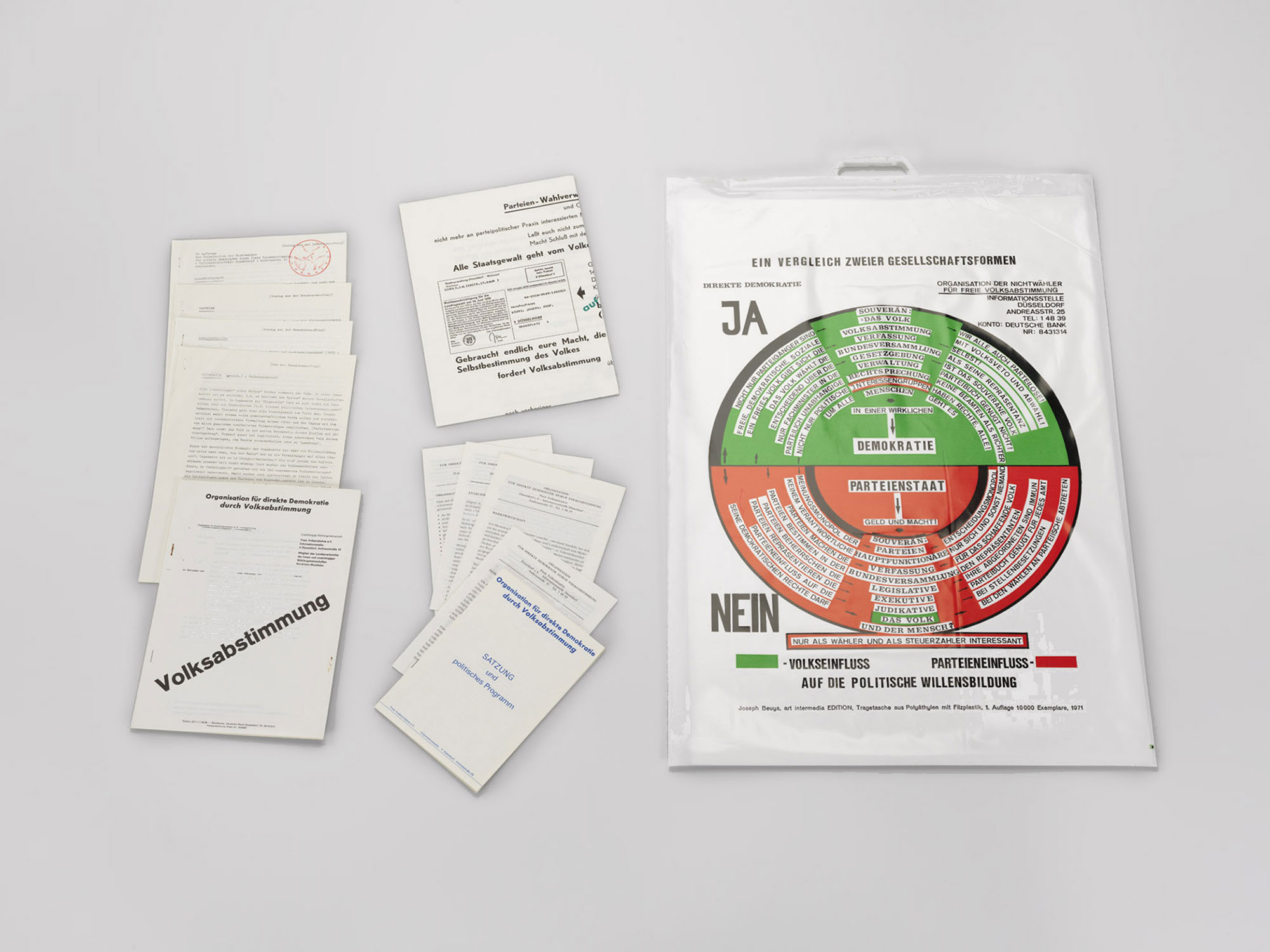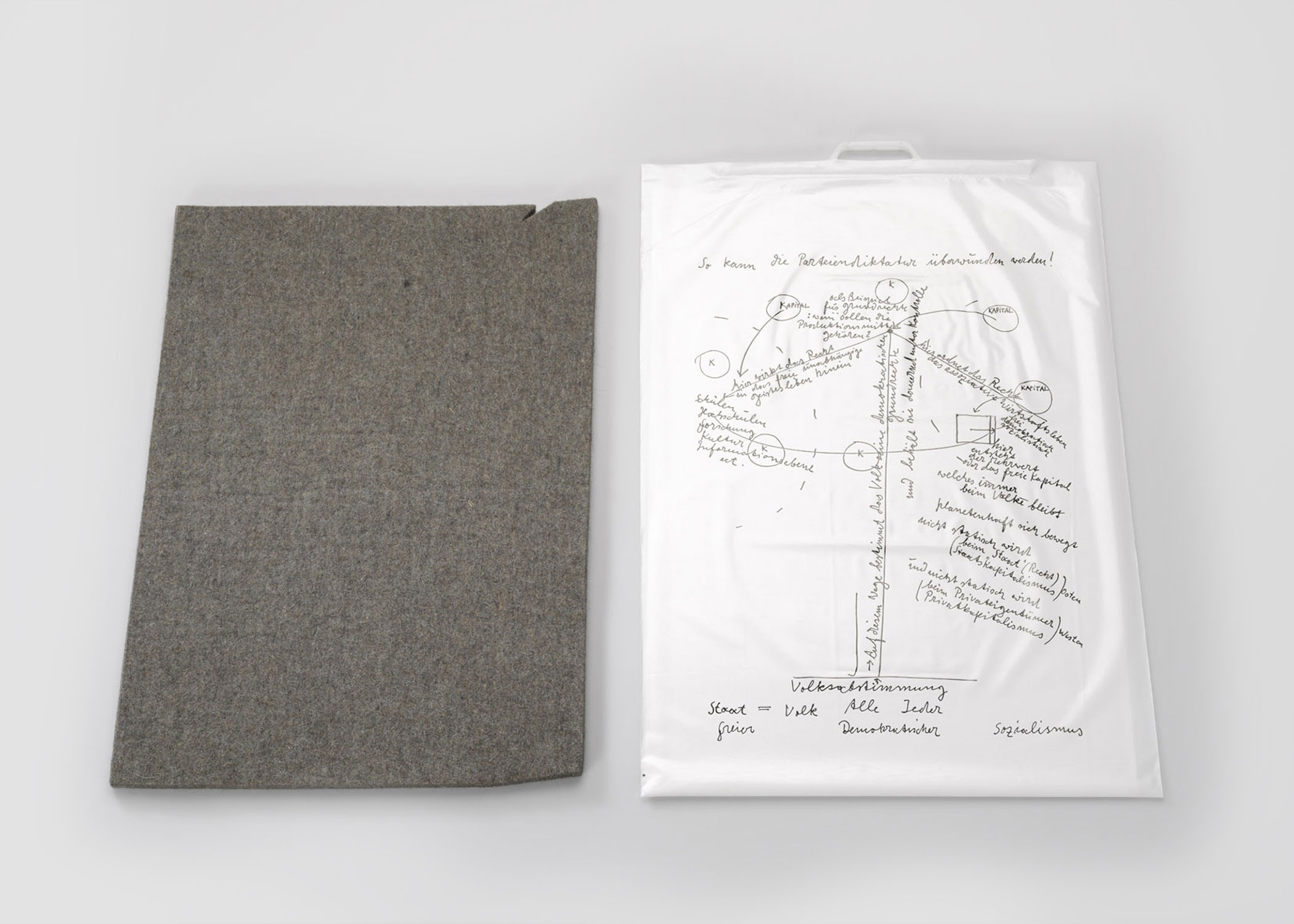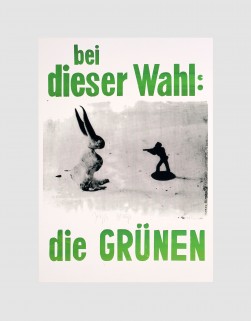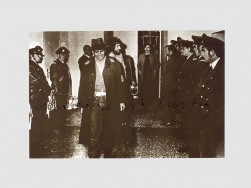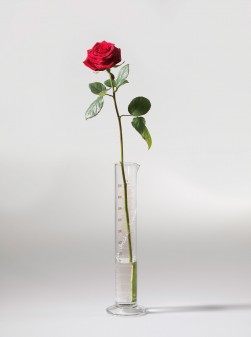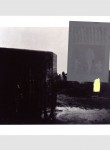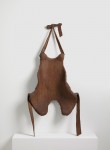How the Dictatorship of the Parties Can Be Overcome
[So kann die Parteiendiktatur überwunden werden]
- 1971
- Printed polyethylene shopping bag with information sheets and felt object
Bag 75 x 51.5 cm; felt 68 x 48 x 1.2 cm - Edition: 10,000 planned, approx. 500 with felt object made; signed and numbered on one information sheet
- Publisher: art intermedia, Cologne
- Catalogue Raisonné No.: 40
During its ‘economic miracle’ of the postwar period, West Germany experienced widespread social optimism. By the late 1960s, however, this era of contentment was coming to an end, a development signalled most dramatically by the widespread student protests of 1968. These targeted the out-dated university system, the coalition government of the time, the Vietnam War and the nation’s failure to confront the National Socialist past. In addition to educational reforms, the students called for more participation in social decision-making processes. In the spirit of this call for reform, Beuys co-founded the German Student Party [Deutsche Studentenpartei] in 1967. Three years later, in an effort to engage an audience beyond the university, he relaunched the party as the Organisation of Non-Voters, Free Collective Referendum [Organisation der Nichtwähler, Freie Volksabstimmung]. With this initiative, he began advocating a system of direct democracy, in which the needs of the people would supersede those of party politics.1
How the Dictatorship of the Parties Can Be Overcome was produced by the Organisation of Non-Voters, Free Collective Referendum, as a means with which to publicise their policies. It consists of a large plastic bag, containing political pamphlets. On each side of the bag a diagram is printed. The first diagram, which was originally hand drawn by Beuys, urges the replacement of political parties with a process of direct referendum, in which all citizens may participate in important decision-making processes. In keeping with this aim, the second, typeset diagram, on the reverse side of the bag, promotes the advantages of a ‘True Democracy’ over a ‘Party State.’ As a key source of information concerning the ambitions of the Organisation of Non-Voters, Free Referendum, the shopping bag was distributed in conjunction with a number of public activities and was sold at documenta 5 in Kassel, in 1972.2 Profits from the sale of the bag went to the Organisation for Direct Democracy Through Free Collective Referendum to promote its political work. Some versions of the bag contained a sheet of felt, an insulating substance that symbolised the warmth of social interaction for Beuys. Here the felt evokes a state of greater closeness and solidarity, which he hoped to reach through direct democracy.
On the founding of the Organisation for Direct Democracy Through Free Collective Referendum, see Götz Adriani, Winfried Konnertz and Karin Thomas, Joseph Beuys: Life and Works (New York, Barron’s, 1979), 220–227. ↩
In addition to being sold at documenta 5, the bag was distributed for free in conjunction with outdoor performances such as Action with the Shopping Bag in Cologne in June 1971 and Sweeping Up in West Berlin on May Day 1972. ↩
© H. Koyupinar, Bayerische Staatsgemäldesammlungen
